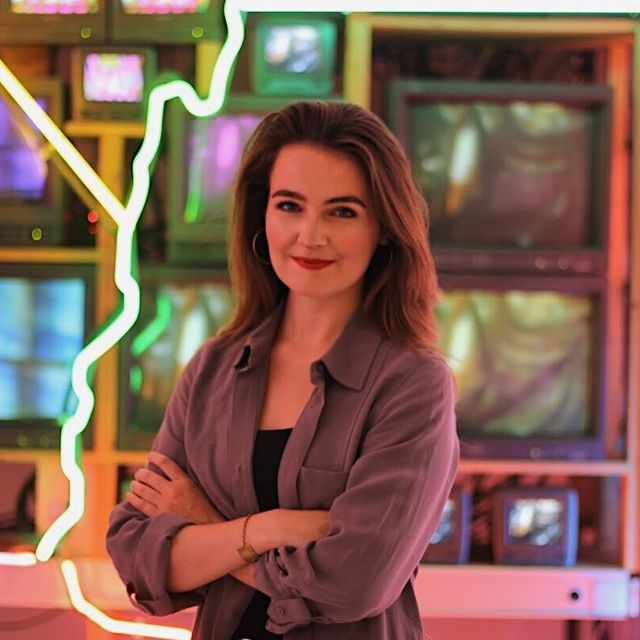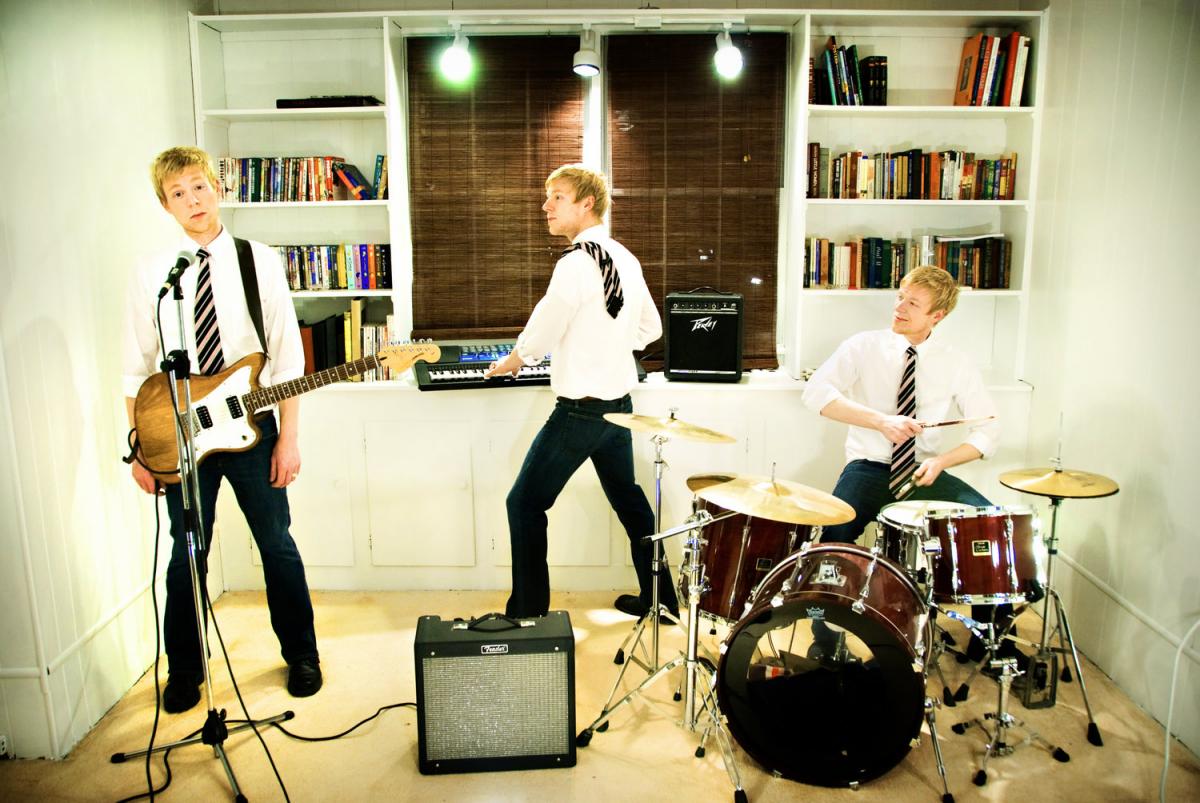
On Friday, April 19th, the Luce Foundation Center hosts another installment of Luce Unplugged. Jessica McFadden, the Luce Foundation Center's Program Assistant, reached out to Mike Boggs of We Were Pirates to learn a bit about the band and its creative process.
Where does the name, We Were Pirates, come from?
When I was a kid, my siblings and I would pretend our bunk beds were ships and we were pirates out sailing in the ocean, getting into adventures. Sometimes the ships were time machines... It’s a call back to a time when creativity was just a natural part of daily life. As an adult with responsibilities, making time to create art is something that I’ve found requires effort and deliberate prioritizing. So, it’s a kind of a reminder or mission statement that getting lost in imagination is an important part of being alive.
How did the members of the band come to work together?
The live lineup for We Were Pirates has changed a lot since the first show in 2007. I’ve played with a lot of solid musicians and good friends over the years, but this current lineup is really great. Kate Rears Burgman started playing bass in 2010. Her first Pirates show was a DC United game. Then Pat Frank learned all of the drum parts very last minute for a tour down to Austin, Texas for South by Southwest in 2012. It was supposed to be temporary gig for him, but seven years later, I think it’s safe to say he’s sticking around. Scott Greenberg is the newest member of the crew on guitar and he joined up in 2013.
It’s definitely rewarding to be playing with people who are not only very talented, but who have also become good friends. We’ve been able to take our spouses and families and our dogs out with us on some out of town shows and I feel very fortunate that we all get along so well and genuinely enjoy each other’s company.
You’ve produced a large volume of songs consistently since 2007, from The Wolf EP, to the soundtrack of Dear Mr. Watterson in 2013, to Matter in 2016, and now your new project, Gone. Can you tell us a little bit about what your creative process looks like?
More often than not, a song starts out as a melody that gets stuck in my head and won’t go away. In that case, I sit down with a guitar or keyboard and sort out the notes and then start writing lyrics for the melody.
Another way that it tends to happen is that I’ll be playing an instrument like guitar, bass, keyboard or drums and I’ll land on something that I think has promise. I’ll give you an example from this past week where I ended up with a new song that I think is one of my favorites ever. I was practicing guitar and kept coming back to a riff that I really liked. I have a home studio where I record my songs, so I was able to quickly record a rough idea to return to later, since I was in a rush and didn’t have time right then to explore the idea further.
I came back a couple days later and fleshed it out a bit more. In that second session, I had the guitar, vocal melodies, drums, and about half of the lyrics sorted out. The next day I came back to it thinking it would be pretty easy to finish up. Many frustrating, but rewarding hours later, I emerged with finished lyrics and a rough demo where I had added bass, vocal harmonies, and a shaker.
The next part of the process comes a little later when I have a batch of songs that are cohesive enough to group together into an album or an EP. That’s when I carve out more time to see if the song structure should stay as-is, or if I should try to approach it from a different angle.
One other thing that I’ll mention about the process is that I used to rely on bursts of creative energy more than I do now. I’ve found that trying to be more disciplined and consistent with songwriting and rehearsing can be helpful. There are days when I don’t feel at all like sitting down and wrestling with my brain to try to conjure up a new thing. But those frustrating sessions become worth it the next time that spark does happen to be there and you feel prepared from having exercised those creative muscles with those seemingly fruitless writing sessions.
What artists inspire you?
Oh man. So many. Pedro the Lion, Elliott Smith, American Analog Set, Sufjan Stevens, Radiohead, The Beatles, Sam Cooke, Earl Sweatshirt, Caribou, and Oddisee. Too many to name.
I’m not a big fan of staying consistent, musically. The new EP that I just released, Gone, is pretty mellow and understated. Some sad and thoughtful, acoustic guitar driven tracks. But the previous record, Matter, was mostly electronic and had very few acoustic elements. Years ago, I was making songs that were faster and fuzzier garage rock. There's nothing wrong with carving out a musical space and inhabiting that, but I tend to get antsy and want to change things up.
What’s your experience in the DC music scene been like?
DC is a strange town for music, but despite that, it has a really impressively diverse group of talented musicians. I don’t think there is any one genre of music that people think of when they think of DC music. Of course, you also have the jazz legacy from greats like Duke Ellington. Two of my favorite current local musicians are Oddisee and Damu the Fudgemunk, who are unbelievably talented and prolific hip-hop artists and producers. Maybe the common element is that it takes a certain kind of DIY-minded creative type, who is willing to take more risks and do a lot of their own production and promotion themselves.
I started We Were Pirates when I was living in Nashville, and it is incredible how different the two cities are. Nashville has an industry of people who make their living by helping and supporting songwriters. DC doesn’t have much of that. So, I think that means that a lot of us have to find our own way, rather than just trying to fit into a musical machine.
I think that can be good and bad, in the sense that it’s tough to make a living on music alone in such an expensive area that lacks a lot of music-industry-specific support and infrastructure. But I think that can also be liberating and tends to encourage a unique sound, because artists around here aren’t trying to impress some A&R person. Many of us are trying to skip that step and get the music directly to listeners. The internet has made that a lot easier, but there are still times when I find myself thinking that it might be nice to have a somewhat larger music industry presence, locally.
That being said, there are some incredible local music institutions around. I've been going to and playing shows at Black Cat for years and I'm grateful that it's still around. Not everyone gets to have places like that and 9:30 Club around. We were really honored to get to play at The Kennedy Center a couple years ago. NPR Music is here, WAMU has been really great to us over the years, and of course we’re unbelievably excited to be playing Luce Unplugged for the Smithsonian. So, all in all, I’m pretty happy to be making music here.
# # #
Want to hear more from We Were Pirates? Check out their work on their website and Spotify. Luce Unplugged is a free, monthly concert series held in the Luce Foundation Center for American Art. Be sure to check out upcoming performances and don't miss We Were Pirates perform on Friday, April 19th! Snacks and libations available for purchase at on-site bar. No registration required. Object talk at 5:30 pm, We Were Pirates at 6 pm.



















